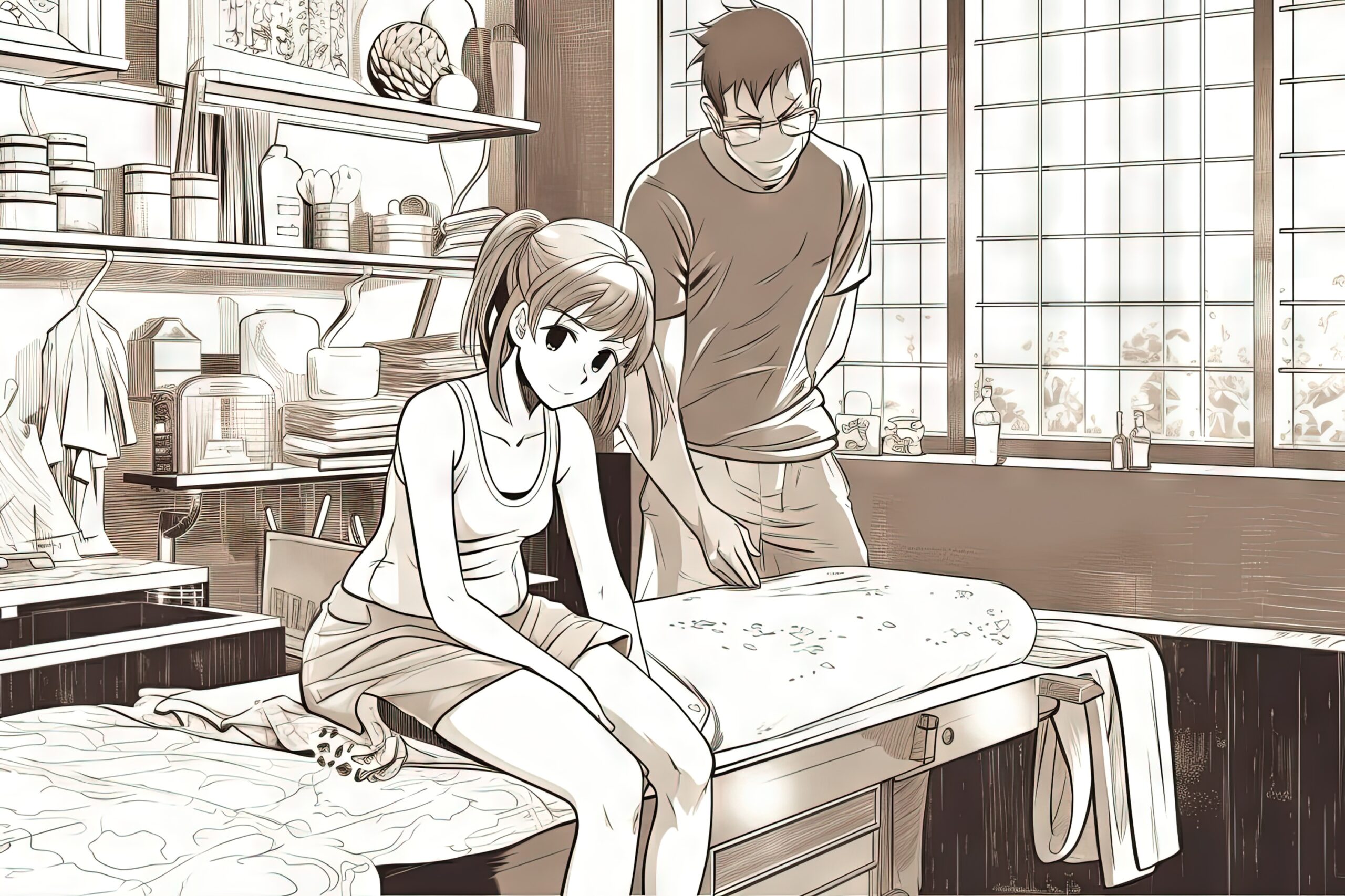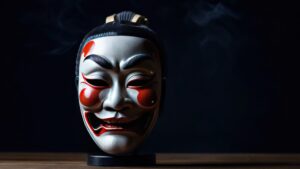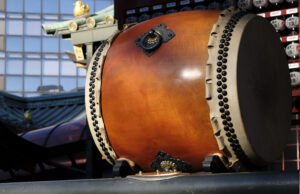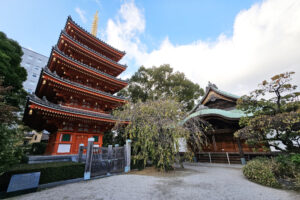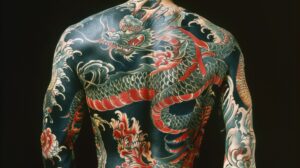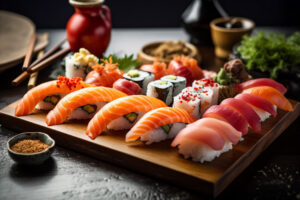In recent decades, the visual storytelling mediums of manga and anime have surged in popularity worldwide. Both forms originate from Japan, yet they offer unique experiences shaped by their respective characteristics and traditions. This article explores the exciting interplay between manga and anime, examining their origins, visual styles, narrative techniques, character development, adaptations, audience engagement, serialization, cultural impacts, global reach, and future trends. This exploration reveals the nuanced differences and similarities that make both mediums beloved by fans around the globe.
The Origins of Manga and Anime: A Cultural Overview
Manga, the traditional Japanese comic art, traces its roots back to ancient Japanese picture books known as "emaki." These illustrated narratives evolved over time, with significant influences from ukiyo-e (woodblock prints) and Western comic strips in the late 19th and early 20th centuries. The post-World War II era marked a significant turning point with the emergence of influential artists such as Osamu Tezuka, often referred to as the "God of Manga." His pioneering work laid the foundation for modern manga, establishing themes and narrative styles that resonate to this day.
Anime, on the other hand, emerged as a distinct form of animated entertainment in the mid-20th century, initially influenced by the same Western styles that impacted manga. The first feature-length anime film, "Namakura Gatana," debuted in 1917, showcasing the budding potential of animated storytelling. However, it was not until the 1960s, with the rise of television, that anime began to flourish. Tezuka’s adaptation of "Astro Boy" is often credited with setting the standard for anime production.
The cultural significance of both manga and anime cannot be overstated. They reflect Japanese societal values, trends, and concerns, often serving as mirrors to the nation’s psyche. Despite their shared origins, manga and anime have branched out into diverse genres, appealing to various demographics and tastes. As both mediums evolved, they created unique storytelling languages that resonate with audiences far beyond Japan.
Today, manga and anime coexist as integral components of global pop culture, influencing a myriad of other artistic fields, from video games to fashion. Their rise in international popularity has led to collaborations, merchandise, and conventions dedicated to both art forms, further solidifying their status in the global entertainment landscape.
The intertwining histories of manga and anime present a fascinating narrative of cultural exchange and adaptation. Understanding their origins fosters a deeper appreciation for the artistry and storytelling techniques inherent in both forms, encouraging a dialogue about their respective merits and innovations.
As we delve deeper into the artistic and narrative intricacies of manga and anime, it’s essential to recognize how their distinct paths have shaped their evolution and how they continue to captivate audiences around the world.
Visual Style: The Artistic Differences Between Two Mediums
Visual representation stands at the core of both manga and anime, yet they differ significantly in their artistic approaches. Manga typically showcases a black-and-white aesthetic, employing intricate line work, shading, and panel layouts to convey mood and emotion. Artists utilize detailed illustrations to create depth, often allowing readers to linger on each frame, absorbing the nuances of the artwork. This meticulous attention to detail invites readers to engage deeply with the visuals, fostering a personal connection to the story.
In contrast, anime adopts a vibrant color palette, bringing characters and settings to life with dynamic movement and sound. The animation process, while visually striking, often necessitates a different approach to artistry. While some anime retains the stark contrasts found in manga, others favor a more fluid, stylized representation, emphasizing action and visual effects that can engage viewers in real-time. The movement in anime adds a layer of immediacy that is not present in the static art of manga.
Another notable difference lies in the pacing of visuals. Manga allows for more segmented pacing; readers control the speed at which they experience the story. This autonomy enables a deeper focus on individual panels and storytelling elements. In contrast, anime dictates the viewing pace, often using cinematographic techniques such as cuts, transitions, and camera angles to convey urgency or emotional intensity.
Character designs also showcase variations between the two mediums. Manga often emphasizes exaggerated facial expressions and features, allowing for a range of emotional responses within single frames. Conversely, anime may streamline designs for consistency across episodes, focusing more on fluid motion and expressive voice acting to enhance character portrayal. These stylistic choices contribute to how viewers and readers perceive and connect with the characters.
Additionally, the choice of color in anime can significantly affect mood and atmosphere. Directors often use color theory to evoke specific emotions, enhancing the storytelling experience beyond visual representation alone. In contrast, manga relies heavily on the interplay of light and shadow to create depth and impact without the advantage of color.
Ultimately, the visual styles of manga and anime serve distinct purposes, reflecting their respective storytelling techniques and audience engagement strategies. Recognizing these differences enriches our understanding of how both forms communicate narratives and evoke emotional responses.
Narrative Techniques: Storytelling in Manga vs. Anime
The narrative structures of manga and anime reveal significant differences in how stories are told. Manga often embraces a more episodic format, allowing for extensive character development and world-building over long arcs. This format gives authors the freedom to explore subplots, delve into character backstories, and establish intricate relationships over extended periods. Readers may savor individual chapters, creating a sense of anticipation for future releases while investing emotionally in the characters’ journeys.
Anime, on the other hand, frequently condenses storylines to fit the constraints of episode formats. While some series adapt manga chapter-for-chapter, many anime condense or modify arcs to maintain pacing and viewer engagement. This sometimes results in changes to character arcs or the omission of subplots, which can alter the original narrative’s depth. The challenge for anime creators lies in capturing the essence of the source material while crafting an experience that resonates within the limitations of screen time.
Additionally, manga often utilizes internal monologues and thought bubbles, providing insight into characters’ thoughts and motivations. This first-person perspective allows readers to understand character complexity, which can be challenging to convey in anime. Although anime sometimes employs narration or visual storytelling techniques to express internal conflict, it often relies on dialogue and action to communicate character motivations, potentially sacrificing nuance.
The pacing of storytelling also differs between the two mediums. Manga can afford to linger on specific moments, allowing readers to digest emotional scenes and plot details. In contrast, anime must maintain a rhythm that keeps viewers engaged, often resulting in fast-paced sequences that can overshadow character development. This shift in pacing can lead to different interpretations of the same narrative, enriched by the medium’s unique demands.
Unlike manga, which may be serialized for years, anime often follows seasons, where an entire series may conclude in a matter of months. This rapid release cycle can lead to rushed conclusions or cliffhangers that don’t allow for the same level of resolution found in manga. As a result, fans of both mediums sometimes experience tension over how faithfully an anime adapts its source material.
In summary, while both manga and anime are committed to storytelling, their narrative techniques differ significantly due to the constraints and opportunities inherent to each medium. Understanding these differences allows fans to appreciate the unique qualities of each form and engage with the stories they present in distinct ways.
Character Development: Depth and Evolution in Both Forms
The development of characters stands as a hallmark of successful storytelling, and both manga and anime approach this task differently. In manga, character arcs often unfold gradually, allowing creators to explore characters’ growth over time. This deep exploration can lead to intricate relationships, multifaceted personalities, and an emotional resonance that resonates with readers. Each chapter serves as a building block, contributing to a character’s evolution and providing readers with the opportunity to invest deeply in their journeys.
In contrast, anime must condense character development into limited runtime, which can result in faster-paced arcs. While some anime series successfully capture the essence of character evolution, others may simplify or overlook significant growth due to time constraints. This fast-tracking of character arcs can lead to a lack of depth, making it challenging for viewers to forge a meaningful connection with certain individuals.
Character design also plays a role in character development. In manga, characters are often introduced with distinctive visual traits that reflect their personalities, allowing readers to glean insights even before they speak. Anime, meanwhile, utilizes voice acting, movement, and color palettes to further flesh out characters, adding a layer of authenticity to their portrayal. A character’s voice can convey emotion and intention, enriching the narrative experience beyond what is presented visually.
Furthermore, supporting characters often play crucial roles in both mediums. Manga can devote time to building relationships among a wider cast, creating a rich tapestry of interactions that enhances the main storyline. Anime, constrained by episode length, may focus more on key supporting characters, occasionally sidelining others who might have received more extensive development in the original manga.
The exploration of character flaws and conflicts also varies between the two forms. Manga can delve into a character’s inner demons and moral dilemmas through internal monologues and reflective panels. This depth allows readers to engage with a character’s complexities on a personal level. Conversely, anime often relies on dialogue and visual storytelling to reveal character struggles, which can sometimes result in a less nuanced portrayal of internal conflict.
Ultimately, while both manga and anime strive for character development, the depth and execution of this development can vary greatly. Understanding these differences informs our appreciation for the characters we encounter in both forms, allowing fans to celebrate the unique storytelling facets each medium offers.
Adaptations: How Manga Influences Anime Productions
The relationship between manga and anime is often characterized by adaptation, with one form significantly influencing the other. Many successful anime series emerge from popular manga, benefiting from established storylines and fan bases. This symbiotic relationship allows creators to tap into existing narratives while introducing them to a broader audience. For viewers, the anime adaptation of a beloved manga can be an exciting opportunity to see familiar characters and stories come to life on screen.
However, adaptations pose unique challenges. The pressure to remain faithful to the source material can clash with the need for narrative efficiency in anime. Some adaptations strive for accuracy, often following the manga chapter-by-chapter, while others may take creative liberties, altering plotlines or character arcs to fit the constraints of time and pacing. This can lead to mixed reactions from fans, particularly when beloved moments from the manga are omitted or modified.
Additionally, the artistic differences between manga and anime can influence how stories are presented. While a manga artist may spend pages creating detailed backgrounds and intricate panels, an anime adaptation must prioritize animation fluidity and vibrant color. As a result, certain visual elements may be simplified or altered to accommodate the demands of animated storytelling, leading to diverse interpretations of the original work.
Moreover, adaptations can introduce a new dimension to characters through voice acting and music. The emotional weight conveyed through vocal performances and soundtracks can elevate the storytelling experience in ways that static manga cannot. This dynamic addition can resonate deeply with viewers and provide new insights into characters and their motivations.
Another important factor is the timing of adaptations. Some anime are produced while the original manga is still ongoing, leading to original story arcs that diverge from the source material. While this approach can be creatively invigorating, it can also confuse fans who have invested in the manga’s narrative trajectory. As a result, some adaptations conclude with original endings that may not align with the manga’s eventual resolution.
In conclusion, the adaptation of manga into anime reflects a complex interplay of fidelity, artistic interpretation, and audience engagement. While adaptations can successfully introduce new audiences to beloved stories, the balance between honoring the original work and crafting an engaging viewing experience remains a delicate challenge for creators.
Audience Engagement: Who Prefers What and Why?
The preferences of audiences play a significant role in shaping the popularity of manga and anime. Enthusiasts often gravitate toward one medium over the other based on personal tastes and lifestyle factors. Manga readers, for instance, may appreciate the self-paced reading experience, allowing them to linger on intricate artwork and absorb complex narratives at their own speed. The solitary nature of reading also provides a sense of intimacy, fostering a more personal connection to the story and characters.
Anime viewers, conversely, may be drawn to the dynamic visuals, sound design, and the communal experience of watching stories unfold in real-time. The shared energy of watching an episode with friends or at conventions can amplify the excitement of engaging with the narrative. The immediacy of anime, coupled with its ability to evoke emotions through music and voice acting, often resonates with those seeking a more immersive storytelling experience.
Demographics also play a role in audience preferences. Manga tends to attract a diverse readership across various age groups and interests. With a broad range of genres, manga can cater to niche audiences, offering everything from slice-of-life stories to intense action narratives. This diversity makes manga appealing to readers who seek to explore different themes and styles.
Anime viewers, while equally diverse, may gravitate more towards specific genres popularized in the medium, such as shonen (targeted towards young males) and shoujo (targeted towards young females). The visual spectacle of action-packed anime or the romantic escapades of shoujo series can appeal to viewers’ preferences for fast-paced entertainment and visual engagement.
Social media has also transformed audience engagement in both mediums. Platforms like Twitter and Instagram allow fans to share their thoughts, art, and discussions, creating online communities that celebrate both manga and anime. This interactivity fosters a sense of belonging and allows fans to connect over shared interests, blurring the lines between the two forms.
Ultimately, the preferences for manga or anime reveal a complex interplay of personal taste, lifestyle, demographics, and social engagement. Both mediums offer unique experiences that cater to a diverse audience, contributing to the rich tapestry of storytelling that continues to captivate fans worldwide.
The Role of Serialization in Manga and Anime Success
Serialization plays a pivotal role in the success of both manga and anime, influencing their storytelling structure, audience engagement, and marketability. In the world of manga, serialization allows creators to publish their work in magazines, often leading to widespread exposure among fans. This format provides a platform for new and established artists to showcase their stories, allowing readers to follow their favorite series over time. Serialization fosters anticipation, as readers eagerly await the next installment, creating a sense of community.
In the realm of anime, serialization similarly paves the way for successful adaptations of popular manga. A successful manga often leads to an anime production, capitalizing on the established fan base and storyline. The serialized nature of manga can create a built-in audience for the anime, significantly increasing its chances of success. This synergy between the two mediums exemplifies the interconnected nature of their relationship, where the popularity of one can drive the success of the other.
However, serialization also presents challenges. For manga creators, the pressure to meet publication deadlines can impact the quality of storytelling and artwork. The demand for continuous content may lead to rushed stories or filler arcs, which can frustrate readers seeking a cohesive narrative. In some cases, this pressure can lead to burnout, affecting the overall quality of the work.
In the anime industry, serialization may lead to the need for original content that diverges from the manga storyline, particularly when a series is produced while the manga is still ongoing. This can create tension among fans, as some may prefer the original story while others appreciate the new direction. Additionally, the episodic nature of serialized anime often requires tight pacing that may compromise character development, leading to mixed reactions from audiences.
The success of serialized works also influences market trends, driving demand for merchandise, spin-offs, and adaptations. Successful manga series can lead to video games, novels, and films, expanding the universe and enhancing audience engagement. Similarly, popular anime may spawn merchandise, soundtrack albums, and even live-action adaptations, further solidifying their cultural impact.
Ultimately, serialization serves as a double-edged sword in both manga and anime, offering opportunities for growth and success while presenting challenges that can impact storytelling quality. Understanding the implications of serialization enriches our appreciation for both mediums and highlights the intricate dynamics that contribute to their enduring popularity.
Cultural Impact: How Manga and Anime Shape Society
Manga and anime have transcended their entertainment origins to become influential cultural phenomena that shape societal norms, values, and trends. Through their storytelling, both mediums often reflect and critique contemporary issues, from politics and social justice to mental health and relationships. This cultural commentary resonates with audiences, prompting discussions about relevant topics and sparking social awareness.
Anime, in particular, has made significant strides in addressing complex issues such as gender identity, mental health, and societal pressures. Series that explore these themes have garnered critical acclaim, encouraging viewers to reflect on their own experiences and consider alternative perspectives. By tackling difficult subjects, anime serves as a medium for dialogue, promoting understanding and empathy among diverse audiences.
Manga, with its broad range of genres and themes, also addresses societal issues while offering a platform for marginalized voices. From LGBTQ+ representation to explorations of race and identity, manga creators have made strides in portraying diverse experiences. By normalizing these narratives, manga plays a vital role in fostering inclusivity and broadening the lens through which readers engage with the world.
Furthermore, both mediums have contributed to the globalization of Japanese culture, influencing fashion, art, and language worldwide. Iconic characters and styles have permeated various aspects of pop culture, inspiring trends and fostering cross-cultural exchanges. This globalization creates a shared cultural landscape where fans from different backgrounds can connect through their love of manga and anime.
The impact of manga and anime extends beyond entertainment; they play a role in shaping youth culture and identity. For many young people, these mediums provide representation and relatable narratives, helping them navigate their own challenges and aspirations. This connection fosters a sense of belonging, as fans find community and support within the larger fandom culture.
In conclusion, the cultural impact of manga and anime is profound, influencing societal values and norms while offering a platform for diverse narratives. Their ability to address complex issues and connect with audiences worldwide underscores their significance as more than mere entertainment; they are vital cultural artifacts that shape the world around us.
Global Reach: The International Appeal of Both Mediums
The global appeal of manga and anime is a testament to their unique storytelling and artistic qualities. As both mediums have gained traction outside Japan, they have fostered a vibrant international community of enthusiasts. With translations, adaptations, and streaming services, fans worldwide can access a diverse array of stories, from classic works to contemporary hits. This accessibility has cultivated a dedicated fanbase that transcends geographical boundaries.
One of the key factors contributing to the global reach of manga and anime is the advent of digital platforms. Online marketplaces and streaming services have revolutionized how fans consume content, making it easier to access a wide range of titles and series. This democratization of content has led to an explosion of interest, with manga and anime becoming staples in the entertainment diets of millions around the globe.
The influence of social media cannot be overstated in this context. Platforms like Twitter, Instagram, and TikTok allow fans to share their love for specific series, characters, and themes, creating a sense of community and belonging. This interactivity cultivates a shared language and culture, where fans can connect over their favorite titles and engage in discussions that span continents.
Additionally, international conventions and festivals dedicated to manga and anime have emerged, further solidifying their global presence. Events such as Anime Expo in the U.S. and MCM London Comic Con attract thousands of fans, providing spaces for cosplaying, workshops, and panels featuring creators. These gatherings celebrate the diversity of fandom and create opportunities for fans to meet and share their passion for the art forms.
The globalization of manga and anime has also led to collaborations with artists and creators from around the world. As Western artists draw inspiration from Japanese storytelling and visual styles, they contribute to a growing hybridization of these cultural forms. This exchange enriches the landscape of visual storytelling, allowing for new narratives that reflect a multitude of experiences and perspectives.
In summary, the global reach of manga and anime underscores their universal appeal and cultural significance. Through digital platforms, social media, conventions, and cross-cultural collaborations, these mediums continue to
